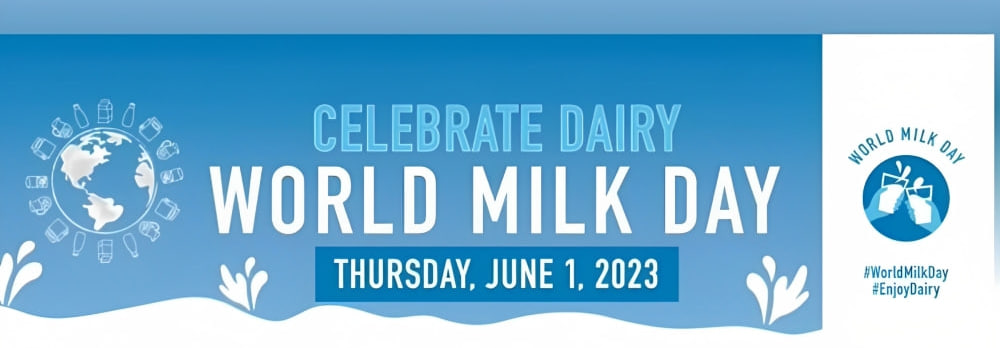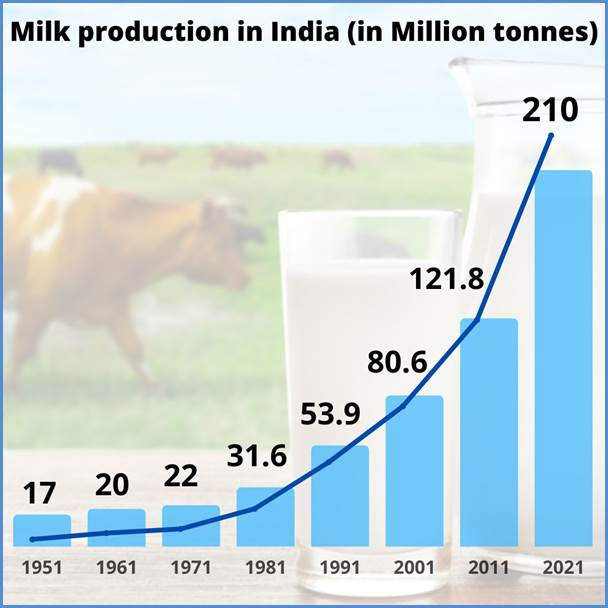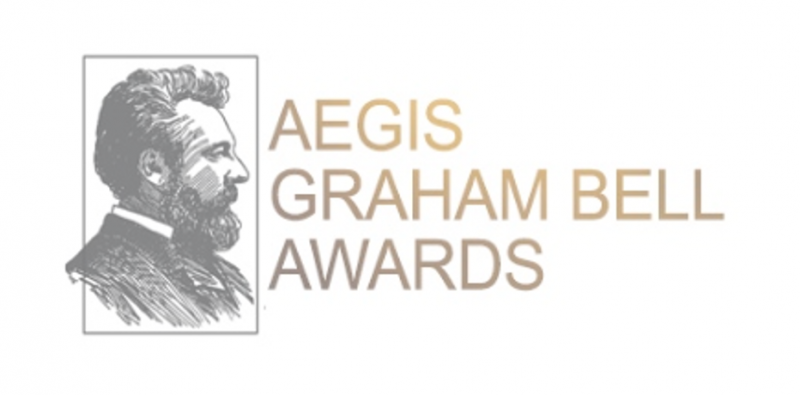
Copyright infringement not intended
Context: The dairy sector in India is set to witness a grand celebration of World Milk Day on 1st June 2023, followed by a two-day Summer Meet on 1st-2nd June 2023 at SKICC, Srinagar, Jammu and Kashmir
Details
- The event is being organized by the Department of Animal Husbandry and Dairying in partnership with the Agriculture Production Department, Government of Jammu and Kashmir.
- The Summer Meet will focus on the expectations of states and UTs to create a convergence framework for effective programme implementation at the ground level, review the progress
World Milk Day
- World Milk Day is an annual celebration that takes place on June 1st to recognize the importance of milk and dairy products for nutrition, health and livelihoods.
- The day was established by the Food and Agriculture Organization (FAO) of the United Nations in 2001 and has since been observed by more than 80 countries around the world.
- World Milk Day aims to spread awareness about the importance and benefits of milk consumption, acknowledge the efforts of dairy farmers, processors, and consumers, and facilitate dialogue and exchange of views during the summer meet.
- The theme of World Milk Day 2023 is “Enjoy Dairy
.jpeg)
The dairy sector in India
About
- The dairy sector in India is one of the most important and dynamic sectors of the economy, contributing significantly to the livelihoods of millions of farmers and rural households.
- India is the largest producer and consumer of milk and milk products in the world, with an estimated production of 210 million tonnes in 2021.
- Currently, India is the largest producer of milk in the world, contributing 23% of global milk production.
- The dairy sector also plays a vital role in ensuring food security, nutrition security, income security and employment generation in the country.

The dairy sector also faces several challenges that need to be addressed to sustain its growth and competitiveness in the global market. Some of the major challenges are:
Low productivity and quality of milk
- The average milk yield per animal in India is much lower than the global average, due to factors such as poor genetic potential, inadequate feed and fodder, lack of health care and disease management, and low adoption of improved breeding and management practices.
- The quality of milk is also affected by adulteration, contamination, poor hygiene and sanitation, and lack of cold chain infrastructure.
Fragmented and unorganized supply chain
- The dairy supply chain in India is largely dominated by small and marginal farmers, who own about 80% of the total milch animals.
- These farmers sell their milk to various intermediaries such as local vendors, cooperatives, private dairies, etc., who have different standards and requirements for milk procurement, processing and marketing.
- This leads to inefficiencies, wastage, exploitation and low returns for the farmers.
Inadequate infrastructure and policy support
- The dairy sector suffers from a lack of adequate infrastructure such as roads, electricity, water, storage facilities, processing plants, cold chain networks, etc., which hamper its growth and development.
- The policy environment is also not conducive for the dairy sector, as there are multiple regulations, taxes, subsidies and schemes that create distortions and disincentives for the stakeholders.
Increasing competition and changing consumer preferences
- The dairy sector faces increasing competition from both domestic and international players, who offer a variety of products at competitive prices and quality.
- Consumer preferences are also changing rapidly, as they demand more value-added products such as cheese, yogurt, ice cream, etc., which require higher investments and innovation.
The way forward for the dairy sector in India is to address these challenges through a holistic and integrated approach that involves all the stakeholders such as farmers, cooperatives, private dairies, processors, retailers, consumers, government agencies, research institutions, etc.
Steps need to be taken
Enhancing productivity and quality of milk
- This can be achieved by improving the genetic potential of the animals through artificial insemination, embryo transfer, sexed semen, etc.
- Providing adequate feed and fodder through improved cultivation practices, agroforestry models, silage making, etc.,
- Ensuring healthcare and disease management through vaccination, deworming, mastitis control, etc.
- Adopting improved breeding and management practices such as balanced ration feeding, clean milking practices, etc.
Strengthening and modernizing the supply chain
- This can be done by organizing the farmers into groups or cooperatives that can leverage economies of scale and bargaining power in milk procurement, processing and marketing.
- The cooperatives can also provide various services to the farmers such as input supply, credit, insurance, extension, etc.
- The supply chain can also be modernized by investing in infrastructure such as bulk milk coolers, milk collection centres, processing plants, cold chain networks, etc., that can reduce wastage, improve quality, and increase the shelf life of milk and milk products.
Creating an enabling policy environment
- This requires rationalizing and harmonizing the various policies, regulations, taxes, subsidies and schemes that affect the dairy sector, and creating a level playing field for all the stakeholders.
- The policy environment should also promote innovation, research and development, and skill development in the dairy sector, and facilitate access to markets, finance and technology.
Diversifying and adding value to the product portfolio
- This involves developing new products or improving existing products that cater to changing consumer preferences and demands.
- The product portfolio should also include niche products such as organic milk, A2 milk, probiotic products, etc., that can fetch higher prices and margins.
- The value addition can also be done by branding, packaging and labelling the products that can enhance their visibility and appeal.
Conclusion
- The dairy sector in India has immense potential to grow and prosper in the coming years, provided it addresses its challenges and leverages its opportunities. The dairy sector can not only enhance the income and livelihoods of millions of farmers and rural households but also contribute to the overall economic and social development of the country.
Must Read Articles:
National Milk Day: https://www.iasgyan.in/daily-current-affairs/national-milk-day
Dairy Sector: https://www.iasgyan.in/daily-current-affairs/dairy-sector
|
PRACTICE QUESTION
Q. How can India improve its dairy sector, which is the largest in the world and contributes significantly to the national economy, rural livelihoods, and nutrition security? What are the major challenges faced by the sector? What are the possible ways forward to address these challenges and enhance the competitiveness and sustainability of the sector?
|
https://pib.gov.in/PressReleasePage.aspx?PRID=1928584

















